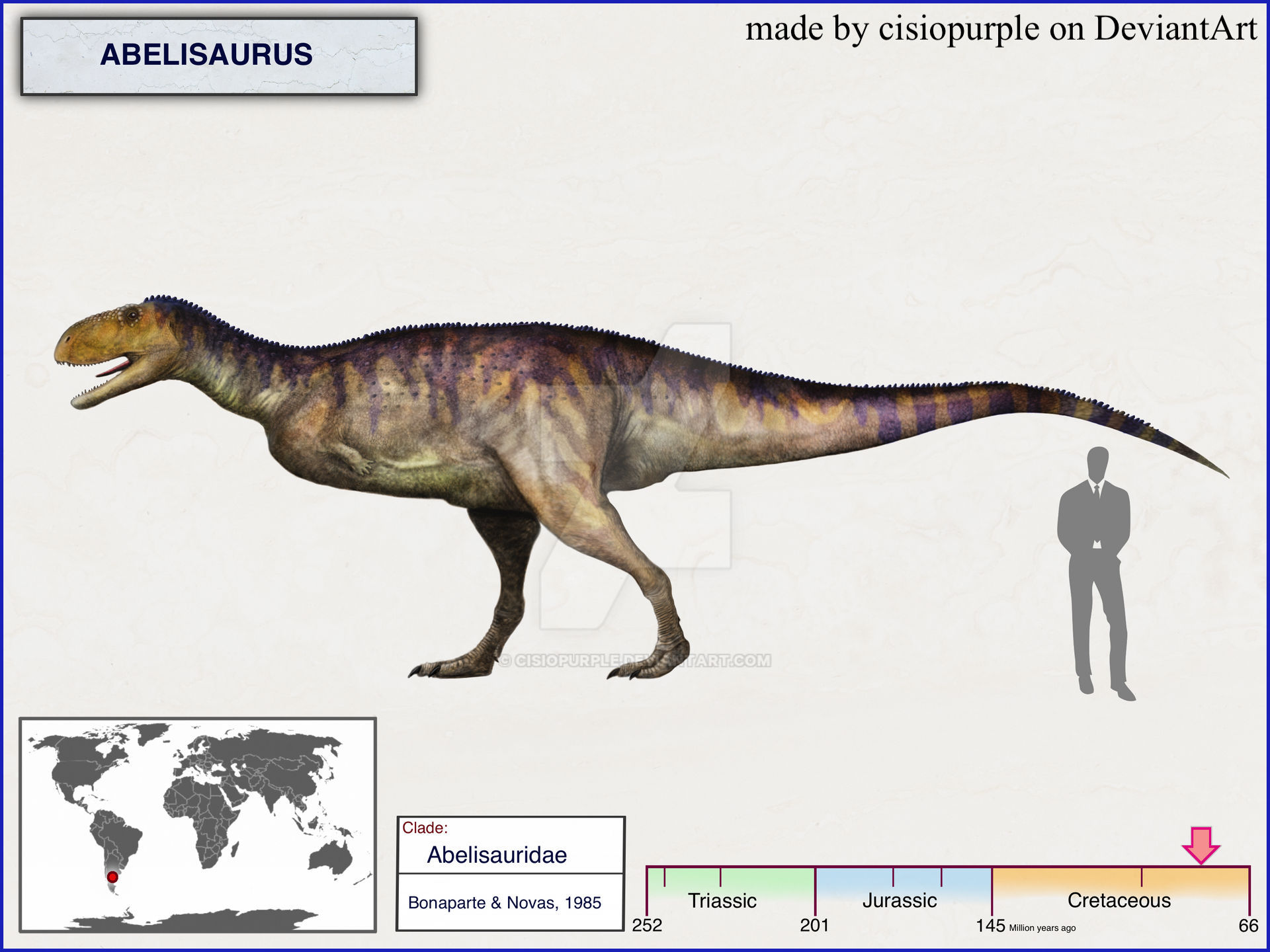Welcome to Abelisaurus

Name Definition
Abel's lizard
Name Given By
Bonaparte & Novas, 1985
Location
Anacleto Formation of Patagonia in Argentina, South America
Classification
Dinosauria, Saurischia, Theropoda, Ceratosauria, Neoceratosauria, Abelisauroidea, Abelisauridae, Furileusauria, Carnotaurini, Abelisaurinae
Size
2 meters tall at the hips (6.5 ft), about 8 meters in length (26.2 ft), about 1.55 tons
Temporal Range
Campanian age of the late Cretaceous, about 80 million years ago
Ecological niche
Apex predator
Species/Sub Species
A. comahuensis
Diet
Abelisaurus would have hunted the various titanosaurs in packs while smaller ornithopods like Gasparinisaura were easier to take down
Introduction
Abelisaurus is a genus of abelisaurid theropods that lived in Argentina during the late Cretaceous. Abelisaurus was named after Roberto Abel, who was the first to have discovered the remains of Abelisaurus. The specific name refers to the Comahue region of Argentina, where the fossil of Abelisaurus was found.
Unfortunately, only a skull with extensive damage on the right side was discovered. After more remains that were discovered were attributed to similar theropods, the family Abelisauridae was made. This family (at the time of writing) was one of the more recently discovered kinds and the family members were most common in Gondwana (the large supercontinent that was the southern supercontinent after Pangea broke apart), though some genera like Tarascosaurus have been found in Laurasia (the northern supercontinent). Although the skull shows no signs of head ornamentations that some other abelisaurs have, some rough ridges were discovered above the eyes and down the snout. Ridges like these usually support keratinous crests, but due to the fact that keratin usually doesn’t fossilize well, it is uncertain how the crests looked like or even if they were there at all. Because only a skull was found, scientists could only make a reconstruction of Abelisaurus based on more complete skeletons from other abelisaurids which have been discovered more frequently around the end of the 20th century. Abelisaurus is perceived by scientists as a mid-sized predatory theropod, around 7 - 8 meters in length. Abelisaurus would most likely have vestigial (used to describe a body feature that has become useless in the course of evolution) arms with 4 digits like other abelisaurids, and only are a remnant of their ancestors' forelimbs. These would have even made the tyrannosaurids' arms look well-developed. It is commonly believed that the vestigiality of these arms were caused by a genetic defect, in which the abelisaurids lost the two genes HOXA11 and HOXD11, both of which play a big role in the development of the forelimbs. The skull of Abelisaurus has an unusual elongation not seen in most other abelisaurs. This is similar to the carcharodontosaurids which are entirely unrelated to the abelisaurids. Due to this elongation, some have proposed that Abelisaurus was in fact a genus of carcharodontosaurid. However, most have rejected this idea and it is thought to have been unlikely. Abelisaurus was most likely an apex predator and hunted on the many titanosaurs in the Anacleto Formation such as Antarctosaurus and Barrosasaurus.
Sources:
- https://en.wikipedia.org/wiki/Abelisauridae
- https://en.wikipedia.org/wiki/Abelisaurus
- http://www.prehistoric-wildlife.com/species/a/abelisaurus.html